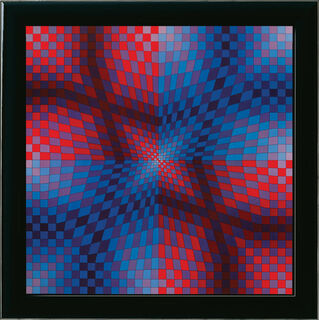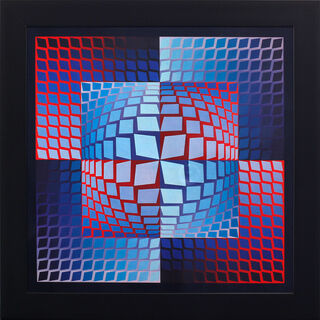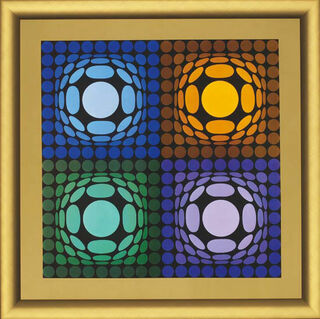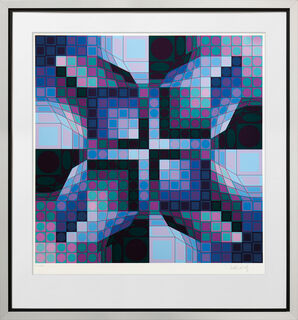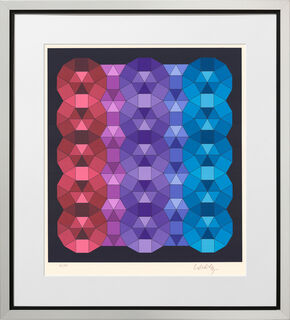Op Art
Op Art - Challenging Your Own Perception
The origins of classical Op Art (not to be confused with Pop Art) can be traced back to the Bauhaus and Constructivism: The experimental play with light and colour, which was firmly anchored in both traditions, was taken to the extreme by Op Art in the 1960s. Characteristic features of Op Art are abstract patterns of form and geometric figures of colour, which are put together in an impressive yet simple way that creates completely unexpected optical effects when viewed. Op Art artworks convey a sense of movement where only static shapes and patterns can be found. They cause flickering before the eyes that challenge the gaze. And they generate optical illusions that are so surprising that sometimes you have to look twice. Op Art painting deliberately plays with the viewer's expectations, recreating the limits of the possible and leaving the viewer with a sense of perplexity. In this way, Op Art challenges one's own perception focuses on the process of seeing for its own sake and invites the viewer to gain entirely new experiences when looking at a work of art.
Masters of Op Art - From Victor Vasarely to Ludwig Wilding
Op Art is broadly divided into static and kinetic traditions. While static Op Art pictures are dominated by painting, the extraordinary optical perception in kinetic realisation is created by actual movement. Many artists associated with Op Art have successfully dealt with both types. One example is the German painter and object artist Ludwig Wilding, whose declared aim was not only to change perception with his art but to activate it in the first place. The pioneer of Op Art, however, was Victor Vasarely. The French painter and graphic artist started his career in the Bauhaus tradition but quickly turned to graphic patterns, optical illusions and spatial illusions. His "Zebra" is still regarded as the first work of Op Art, although he created it already in 1937. Here, the figurative motif of the eponymous animal still dominated - later, the artist broke away from this and worked primarily with basic shapes such as squares, circles, or triangles. The same applies to other well-known representatives of Op Art such as Hildegard Joos, Almir Mavignier or Edna Andrade.
Buy Op Art - Experience Vision in a Completely New Way
Static pictures in which shapes, light and colours are used, in such a way that the eye is fooled into perceiving movement, creating a flickering sensation, or feeling drawn into the artwork itself - all this is characteristic of Op Art. If you would like to experience the illusions of these unique works of art for yourself, you can buy high-quality reproductions of Op Art pictures here. Embark on a journey into optical illusion and experience the process of seeing in a whole new way.

